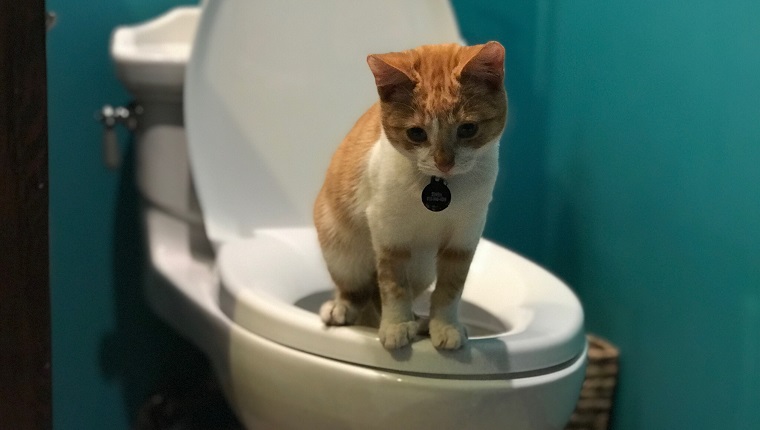Avoid Flush Cat Poop Down Your Toilet - Maintain Your Home's Pipe System
PricingWhat're your ideas about Can You Flush Cat Poop Down The Toilet??

Introduction
As pet cat owners, it's vital to be mindful of exactly how we deal with our feline close friends' waste. While it may appear convenient to purge cat poop down the bathroom, this technique can have harmful effects for both the atmosphere and human wellness.
Environmental Impact
Purging pet cat poop introduces hazardous virus and bloodsuckers into the water, presenting a significant threat to marine environments. These contaminants can adversely affect aquatic life and compromise water top quality.
Health and wellness Risks
In addition to ecological issues, purging feline waste can also posture health and wellness threats to people. Pet cat feces may have Toxoplasma gondii, a parasite that can create toxoplasmosis-- a potentially extreme disease, particularly for expectant women and people with damaged immune systems.
Alternatives to Flushing
The good news is, there are much safer and extra accountable means to deal with pet cat poop. Consider the following options:
1. Scoop and Dispose in Trash
One of the most common technique of disposing of feline poop is to scoop it right into a biodegradable bag and throw it in the garbage. Be sure to utilize a committed trash inside story and dispose of the waste quickly.
2. Usage Biodegradable Litter
Opt for biodegradable feline clutter made from materials such as corn or wheat. These litters are eco-friendly and can be securely disposed of in the garbage.
3. Hide in the Yard
If you have a yard, think about hiding pet cat waste in a designated area away from veggie yards and water resources. Be sure to dig deep sufficient to avoid contamination of groundwater.
4. Mount a Pet Waste Disposal System
Invest in an animal waste disposal system particularly made for pet cat waste. These systems use enzymes to break down the waste, reducing odor and environmental impact.
Conclusion
Responsible animal possession extends beyond offering food and shelter-- it likewise entails proper waste monitoring. By avoiding purging pet cat poop down the bathroom and going with different disposal methods, we can reduce our ecological impact and safeguard human health.
Why Can’t I Flush Cat Poop?
It Spreads a Parasite
Cats are frequently infected with a parasite called toxoplasma gondii. The parasite causes an infection called toxoplasmosis. It is usually harmless to cats. The parasite only uses cat poop as a host for its eggs. Otherwise, the cat’s immune system usually keeps the infection at low enough levels to maintain its own health. But it does not stop the develop of eggs. These eggs are tiny and surprisingly tough. They may survive for a year before they begin to grow. But that’s the problem.
Our wastewater system is not designed to deal with toxoplasmosis eggs. Instead, most eggs will flush from your toilet into sewers and wastewater management plants. After the sewage is treated for many other harmful things in it, it is typically released into local rivers, lakes, or oceans. Here, the toxoplasmosis eggs can find new hosts, including starfish, crabs, otters, and many other wildlife. For many, this is a significant risk to their health. Toxoplasmosis can also end up infecting water sources that are important for agriculture, which means our deer, pigs, and sheep can get infected too.
Is There Risk to Humans?
There can be a risk to human life from flushing cat poop down the toilet. If you do so, the parasites from your cat’s poop can end up in shellfish, game animals, or livestock. If this meat is then served raw or undercooked, the people who eat it can get sick.
In fact, according to the CDC, 40 million people in the United States are infected with toxoplasma gondii. They get it from exposure to infected seafood, or from some kind of cat poop contamination, like drinking from a stream that is contaminated or touching anything that has come into contact with cat poop. That includes just cleaning a cat litter box.
Most people who get infected with these parasites will not develop any symptoms. However, for pregnant women or for those with compromised immune systems, the parasite can cause severe health problems.
How to Handle Cat Poop
The best way to handle cat poop is actually to clean the box more often. The eggs that the parasite sheds will not become active until one to five days after the cat poops. That means that if you clean daily, you’re much less likely to come into direct contact with infectious eggs.
That said, always dispose of cat poop in the garbage and not down the toilet. Wash your hands before and after you clean the litter box, and bring the bag of poop right outside to your garbage bins.
https://trenchlesssolutionsusa.com/why-cant-i-flush-cat-poop/

I am very curious about How to Dispose of Cat Poop and Litter Without Plastic Bags and I'm hoping you appreciated the new blog post. Liked our post? Please share it. Let another person check it out. Thanks for going through it.
This Resource